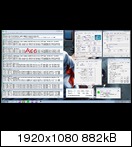How can you say that budget is irrelevant?
R+D budgets (generally) dictate how quickly you can develop/improve a product.
In general, the more money you throw at a problem, the faster it gets solved.
oh boy.... Project Management is not in your future I see.
In other news, I just recently purchased an i5 2500k and after seeing these results, I'm even more happy about the purchase. Go Intel!
![[H]ard|Forum](/styles/hardforum/xenforo/logo_dark.png)

